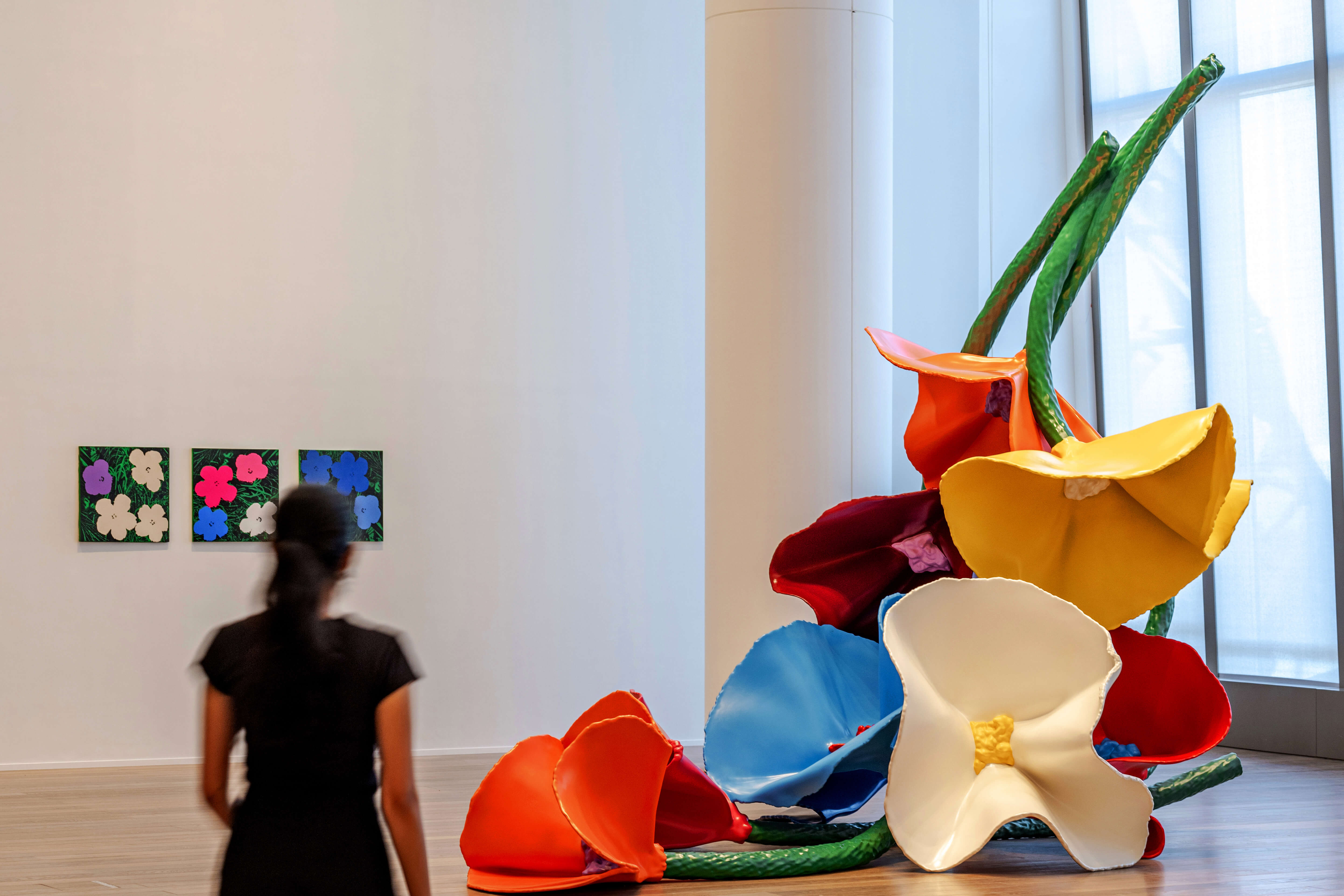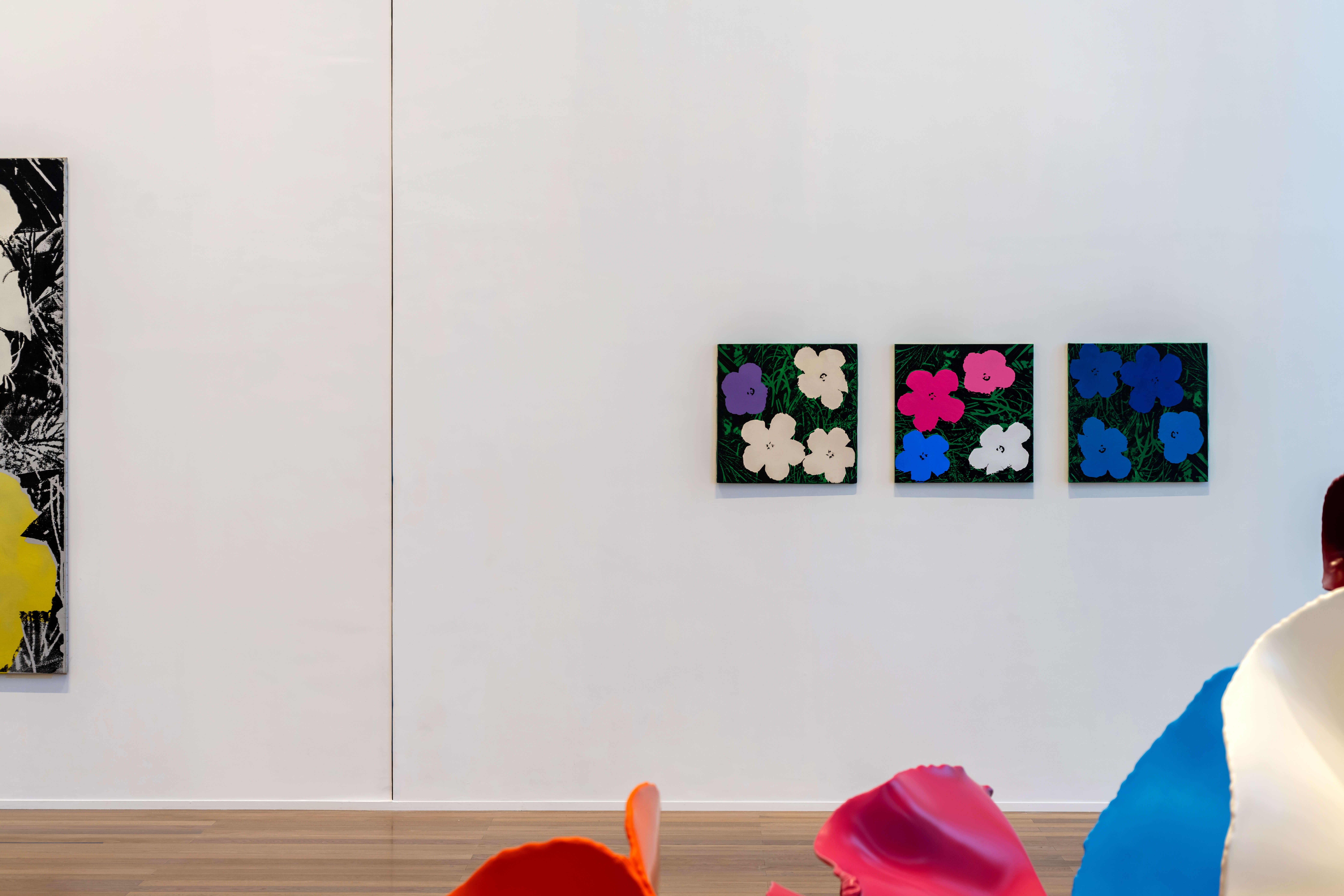
BACK TO TOP
The Luminous Women of Pop Art
~ Rooted in the social landscape of the 1960s, Pop Art was a boy’s club – until the world started noticing the brilliant women who shaped the movement ~By Sohini Das Gupta | 2nd Feb 2024
At 97, American visual artist and playwright Rosalyn Drexler’s polymathic career has earned her many laurels including the Emmy and Obie Awards. But when she held her first art exhibition in the 1950s, newspapers described the artist as a housewife with “a lively imagination”.
The Drexler dilemma – if we can call it that – was emblematic of the inherently masculine premise of Pop Art, a movement that flourished in Britain and America of the 1950s through the 1980s. Amid the post-war boom of media, mass production, capitalist consumerism and a rising obsession with popular culture, the reigning boys of Pop Art – Andy Warhol, Roy Lichtenstein, Robert Indiana, Ed Ruscha, and others – pursued an emotionally detached, object-oriented style of artmaking that often failed to celebrate the artistic gaze of their female contemporaries.
It was largely in retrospect, as recently as a decade ago, that a steady trickle of landmark exhibits reacquainted the modern art lover with the bold, playful, or ruminative genius of Pauline Boty, Rosalyn Drexler, Evelyn Axell and other female pop artists of the ilk. Even pop behemoth and intersectional feminist Yayoi Kusama, who has over the years created seminal artworks including Obliteration Room, Dots Obsession, and the globe-trotting Infinity Mirrored Room series, had to endure the frustration of her ideas being plagiarised in what used to be and arguably continues to be a predominantly male-dominated ecosystem.
 © 2021 Claes Oldenburg and Coosje van Bruggen
© 2021 Claes Oldenburg and Coosje van BruggenBut that does not mean that the world has not slowly but surely woken up to the luminous women of pop art. In fact, you can admire the history and aesthetics of two incredible women pop artists – Elaine Sturtevant and Coosje van Bruggen – right now at Mumbai’s ‘POP: FAME, LOVE AND POWER’ exhibit. The first-of-its-kind showcase, which traces the golden years of American pop art through the works of 12 luminaries, is underway at the Cultural Centre’s four-storey Art House till 11th February.
Put together by London-based curator and art advisor Lawrence Van Hagen, the exhibit is defined by the pop art movement’s guiding themes of ‘Fame’, ‘Love’ and ‘Power’. While each of the three themes sprawl across individual floors of the Art House, Andy Warhol’s immersive installation ‘Silver Clouds’ occupies the fourth.
As you ascend the levels, making your way through a maze of riveting art works by the usual suspects – Claes Oldenburg, Ed Ruscha, Keith Haring, James Rosenquist, Jim Dine, Robert Rauschenberg, Robert Indiana, Roy Lichtenstein, and Tom Wesselmann – you will run into Sturtevant on the third floor, aka ‘Power’. Sturtevant’s art comes with a serving of self-aware subversion, as the master appropriator was known for her approach of ‘repetition’. This means she recreated works by iconic 20th century artists, exploring the themes of authenticity, artistic celebrity, and creative process. Many of her pieces are re-examinations of those created by her male predecessors and contemporaries – the likes of Warhol, Lichtenstein and Oldenburg, who one could argue, were at the receiving end of asymmetrical limelight as compared to their female counterparts.
 Collection Thaddaeus Ropac, London · Paris · Salzburg · Seoul. Courtesy of Estate Sturtevant and Galerie Thaddaeus Ropac, London · Paris · Salzburg · Seoul. Courtesy of Estate Sturtevant and Galerie Thaddaeus Ropac, London · Paris · Salzburg · Seoul.
Collection Thaddaeus Ropac, London · Paris · Salzburg · Seoul. Courtesy of Estate Sturtevant and Galerie Thaddaeus Ropac, London · Paris · Salzburg · Seoul. Courtesy of Estate Sturtevant and Galerie Thaddaeus Ropac, London · Paris · Salzburg · Seoul.Occupying a floor of the Art House that gazes out at the recurrent flow of life in the city are Sturtevant’s Warhol Flowers, a series that mirrors Warhol’s original flower paintings. Looking at the striking works of oil and synthetic polymer silkscreen on canvas, you are likely to be reminded of how while her approach angered some artists, Warhol himself appreciated Sturtevant for evoking questions of authorship with regard to his own art, even sharing specific printing techniques with her.
Also illuminating the third floor is the magnificently melancholic Dropped Bouquet, the final project conceived together by artists Coosje van Bruggen and her husband Claes Oldenburg, before van Bruggen passed away. Comprising one half of what was possibly the 20th century’s most influential artist couple, van Bruggen’s works are known for their monumental odes to the everyday. The bouquet draws from occurrence of flowers as a persistent motif in the duo’s works, where 31 intricate paper flowers come together to symbolise each year of the duo’s marriage. Although created by Oldenburg as an anniversary gift in the face of his wife’s imminent death, the piece encompasses the essence of van Bruggen’s own compelling concepts and creations. Even in a showcase where female pop artists are after all outnumbered, it serves as a reminder of their role – not just as inspirations or anomalies, but as indelible constants.
“At its core, the movement was about the idea of transforming ‘popular culture’ into high art,” quips Van Hagen, whose casual prophecy of the exhibit striking a chord with the Indian audience has fulfilled itself with massive turnouts across all age groups over the last month. True to its promise of bringing the best of the world to India, the Cultural Centre has kept entry free for students of fine arts, children under the age of 7 and senior citizens.
The longer you linger, pop art’s transformative power seems to extend beyond brushstrokes on canvas. You may walk in for the bold aesthetics, bucketlist installations and a slice of American history, but chances are you will step out with a refreshed perspective on gender dynamics in art… and life at large.
Note: ‘POP: FAME, LOVE AND POWER’ was presented at the Art House between December 1, 2023-February 11, 2024.

